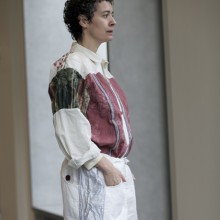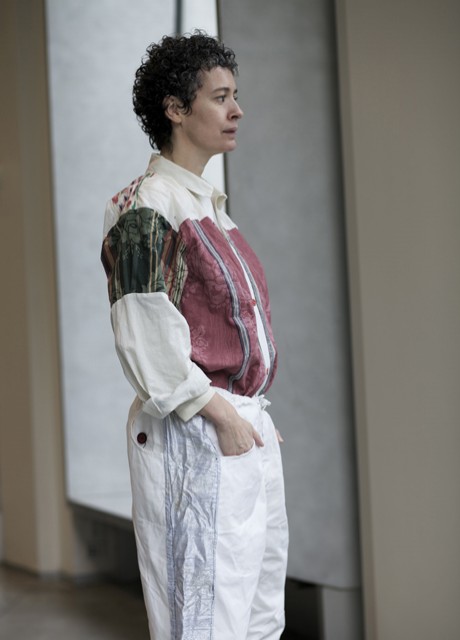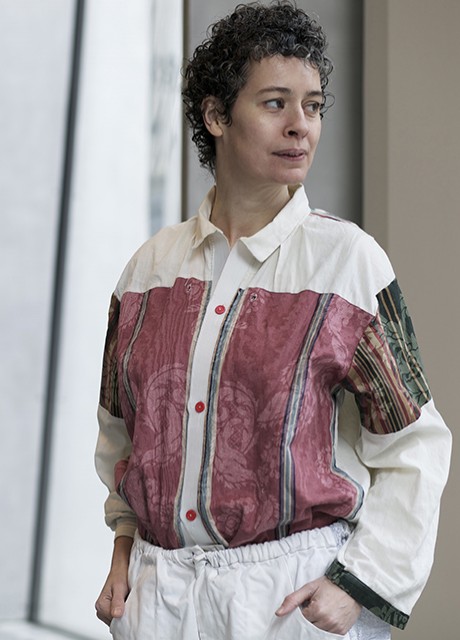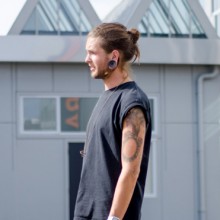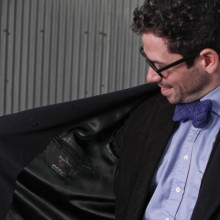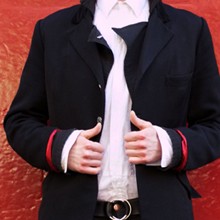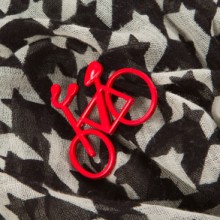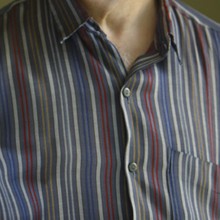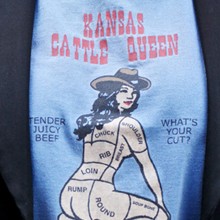
Ethics of Use
Brands control upstream supply chains assiduously; but downstream, after a garment is sold, the user is in charge. A user’s actions can uphold a brand’s values, be incurious about them or subvert them in a range of direct or subtle ways. Defiance comes in many forms: the protestations of a blog, the cutting and reworking of scissors and thread, or the attitude with which a garment is worn, upending the worldview of the corporation that made it.
Open imperfect
"I’m wearing an outfit that was made for me by a man in Chinatown. So one day I was rushing to my medical appointment for my green card and I glanced to the right, and there was this beautiful old Chinese man approaching me, in a beautiful shirt. And I said to him, ‘Wow, I love your shirt, it is so beautiful’. And then he said to me ‘I made it, I made that shirt’.
And then I said, ‘Oh wow, do you make clothes?’. He couldn’t speak English very well so our conversation didn’t really go anywhere, but I said, ‘Do you have a shop or are you somewhere or can I meet you somewhere?’ because he said he had more clothes. We couldn’t figure it out somehow and then he said, ‘come and follow me’. So I followed him… he had a little alley that was locked off with by a fence. So he opened it and put his cart and his bicycle in there.
Then he took off his shirt and he gave it to me. And then I said, ‘can I give you money for it?’ but he said, ‘No, no, it’s fine’. And then I said ‘I want to give you some money for it’, because I could also see he was not a wealthy person. So I gave him some money and then he said, ‘shall I make clothes for you?’. I said ‘Yes, please’. So we exchanged telephone numbers.
So when we meet up again he had made new clothes for me, and he had made a series so I could kind of pick clothes. He made his shirt in smaller versions for me and he made these pants for me, which are quite extraordinary, I think. And they have a lot of details (laughs). He is not a perfect sewer at all, which I love, but there is some kind of spontaneity in his compositions… he put elastic as the fly placket.
...They are all [made from] upholstery fabric sample books, and here you have the holes still… [from where they were bolted] in the corner? (laughs) … I ended up with eight pieces, something like that. And I think I wear three pieces quite regularly.
This was… I think in the late spring last year. It just touched me. He was so beautiful, and of course he also needed the money, I understood that, but I liked the way that he didn’t sew so perfectly. I wish I could have this unskilled quality in my own clothes. I’m a designer, so I make clothes, and I always look for this quality. Where there’s a sense of openness and spontaneity.
I [also] like sewing [with] skill… I designed good [within] in the [commercial fashion] system... so I also designed really finished clothes. Now I hand make clothes so I always look for that more spontaneous coming together of things. That is not restricted within the habituations of our thinking about clothes. I like things that feel free and that have a certain awareness about them.
For me it’s very important that clothes are not a shield. I want to feel open to the world and I want to feel fluid in relation to the world. I don’t want to feel harnessed in relation to the world [and adhering to the aesthetics of the commercial fashion industry]. So for me I always look for clothes that have this kind of opening somehow… the kind of unexpected or unconditioned something…"
New York - January 2013
Photograph by
Ellinor Stigle
+ More views from this story






